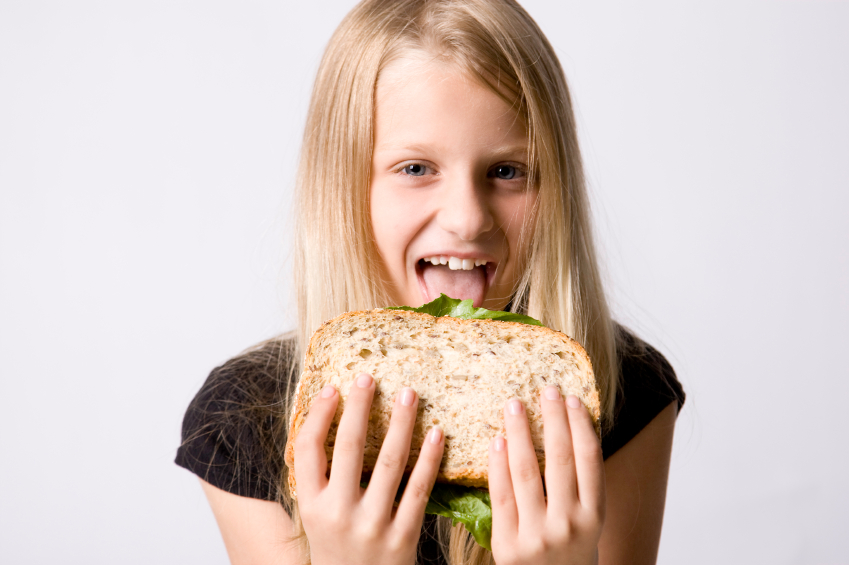For immediate release: Wednesday, September 19, 2012
Montpelier, VT – Some children may be at greater risk from mercury in tuna than previously thought, finds a new study by the Mercury Policy Project (MPP). Tuna Surprise contains the first-ever test results of canned tuna sold to schools, including Vermont schools, and assesses children’s mercury exposure from canned tuna. Click here to download the executive summary.
Independent studies, not available when government advisories were issued eight years ago, indicate that adverse effects to methylmercury occur at much lower levels of exposure than previously believed.
The report, co-released by VPIRG and other public health, consumer and environmental groups, advises schools and parents not to serve any albacore tuna to kids and to limit consumption of light tuna to twice a month for older kids and only once a month for smaller children (under 55 pounds).
“In my work I learn about toxins in all kinds of products, but it’s particularly disturbing to learn that some kids are being served up too much toxic mercury in their school lunches,” said Lauren Hierl, environmental health advocate at Vermont Public Interest Research Group. “By following this new report’s guidelines, parents and schools can make sure we’re not inadvertently giving our kids more tuna sandwiches – and therefore mercury – than is safe.”
“Most children are already consuming only modest amounts of tuna and are not at significant risk,” said Michael Bender, MPP’s director. “So the focus really needs to be on kids who eat tuna often, to limit their mercury exposure by offering them lower-mercury seafood or other nutritious alternatives.”
Tuna Surprise points out that canned tuna is by far the largest source of methylmercury in the US diet and accounts for nearly one-third of Americans’ total exposure to this toxic mercury compound. MPP tested the mercury content of fifty-nine samples, representing eight brands of tuna, sold to schools in 11 states around the country.
“As far as we know, no one has previously tested this market sector,” said Bender. Testing showed that the tuna contains mercury levels similar to what other investigations have found in canned tuna sold in supermarkets. Albacore or “white” tuna had much higher mercury levels than did “light” tuna, and mercury levels in both types were highly variable.
Canned tuna is a popular lunch food for kids. American kids eat twice as much tuna as they do any other kind of fish, and one out of every six US seafood meals is canned tuna. Further, canned tuna is served through the federally subsidized school lunch program. And schools may be switching to more lean protein sources this fall as they implement new school lunch standards.
Ned Groth, Ph.D., an environmental health scientist with over 40 years of experience, analyzed a variety of scenarios in which children of different ages ate different amounts of tuna with different mercury levels, and examined the relative exposure and risk from each scenario. Exposures in those scenarios ranged from less than one-quarter of to more than 40 times the current federal definition of safe exposure. “Kids who eat tuna frequently can easily get very high mercury doses,” says Groth. “Some of the larger doses are clearly far too high to be acceptable.”
While reducing mercury emissions will take years, parents and schools can manage risk now by being aware of children’s tuna consumption and taking steps, where necessary, to keep exposure to mercury from tuna low.
Tuna Surprise recommends:
- Children should not eat albacore tuna. Albacore or “white” tuna contains triple the mercury level of light tuna; nothing justifies tripling a child’s mercury dose.
- Children weighing more than 55 pounds should not eat more than two servings of light tuna per month. This amount of tuna (six ounces) is more than the average child currently consumes; the mercury dose it contains is acceptably low in risk.
- Children up to 55 pounds should consume no more than one tuna meal per month. Because of their smaller body size, an added margin of caution is appropriate for younger children.
- “Tuna-loving” kids should be the focus of risk-management efforts. In particular:
- No child should eat tuna every day. (Tuna Surprise presents cases of children who did that, and were diagnosed with clinical methylmercury poisoning.)
- Parents and schools could offer children other seafood choices, such as shrimp and salmon, which are just as nutritious but contain far less mercury.
- The U.S. Department of Agriculture’s School Lunch Program should phase out commodity purchases of canned tuna, and replace it with lower-mercury seafood items and/or other extra-lean protein sources.
“As a mom, I’m always looking for easy, healthy meals for my son, and tuna fits the bill in many ways – but this new report will help schools and parents like me make healthy choices to protect our kids’ developing brains and bodies from toxic mercury,” added Hierl.
###

